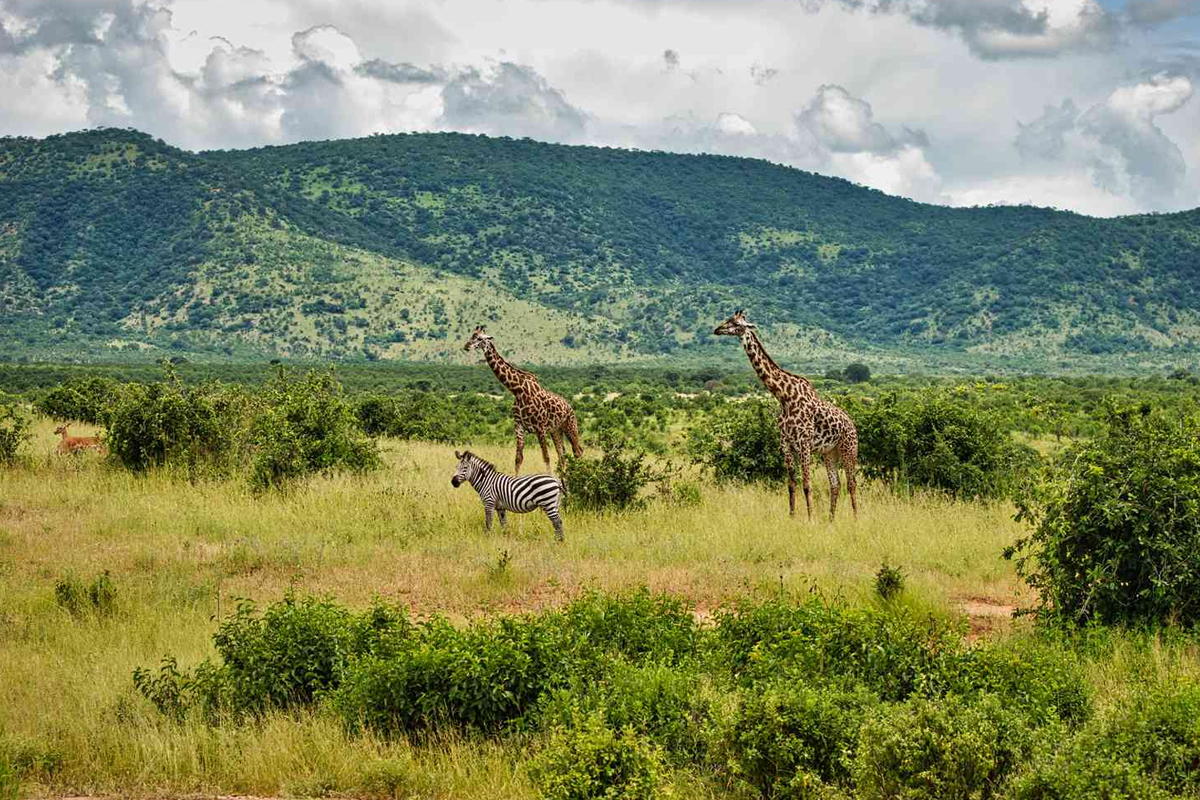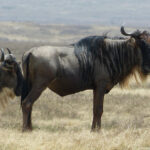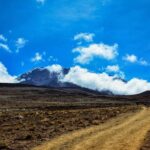Tanzania National Parks Tourist Surge 2024
Tanzania has become a hot destination for global travelers in 2024, with a record number of tourists flocking to the country’s renowned national parks. As the world embraces travel post-pandemic, Tanzania’s unique wildlife, pristine landscapes, and rich cultural heritage have positioned it as a leading safari destination. This recent travel surge is not only a testament to Tanzania’s unparalleled beauty but also highlights the country’s successful efforts in promoting tourism, conserving wildlife, and enhancing visitor experiences.
1. Tanzania’s Rising Popularity in 2024
Over the past few years, Tanzania has gained recognition as one of the world’s best wildlife destinations, and 2024 is proving to be an exceptional year. With iconic parks like Serengeti, Ngorongoro Crater, and Kilimanjaro National Park, the country appeals to adventure seekers, wildlife enthusiasts, and cultural travelers alike. This year, Tanzania’s tourism industry is witnessing an unprecedented rise, driven by pent-up travel demand and a growing desire for nature-based vacations.
2. Key National Parks Leading the Surge
While Tanzania boasts numerous national parks and reserves, a few key destinations have particularly benefitted from the influx of tourists:
- Serengeti National Park: Famous for the Great Wildebeest Migration, Serengeti remains a top draw, offering visitors the chance to witness one of nature’s most awe-inspiring spectacles.
- Ngorongoro Conservation Area: Known for the Ngorongoro Crater, a UNESCO World Heritage site, this park is home to a diverse array of wildlife and provides unique cultural experiences with local Maasai communities.
- Kilimanjaro National Park: Mount Kilimanjaro, Africa’s highest peak, has seen a notable rise in trekkers, as adventurous travelers flock to Tanzania to conquer the iconic mountain.
- Tarangire and Lake Manyara National Parks: With their distinctive ecosystems and birdlife, these parks have become popular options for tourists seeking a quieter yet equally breathtaking safari experience.
3. Factors Driving the Tourism Boom
Several key factors are contributing to the record-breaking tourism numbers in Tanzania this year:
- Ease of Travel: With improved flight connections to major hubs worldwide, reaching Tanzania is now easier than ever. New international routes and expanded flight options have removed significant travel barriers for international tourists.
- Focus on Sustainable Tourism: Tanzania’s commitment to conservation and eco-friendly travel practices appeals to the environmentally conscious traveler. The country’s sustainable tourism initiatives resonate with tourists seeking experiences that respect and protect local ecosystems.
- Growing Awareness of Tanzania’s Natural Wonders: Global awareness of Tanzania’s biodiversity and national parks is increasing, thanks to promotional campaigns and high-profile media coverage. From documentaries to social media influencers, the beauty of Tanzania is gaining worldwide attention.
- Post-Pandemic Travel Trends: With a shift toward outdoor and nature-based travel experiences, Tanzania’s wide-open spaces and pristine landscapes offer the perfect setting for tourists who want to explore safely.
4. Government Initiatives Boosting Tourism
The Tanzanian government has been instrumental in driving tourism, implementing policies and improvements aimed at enhancing the visitor experience:
- Infrastructure Development: Investment in road networks, airport facilities, and eco-friendly accommodations have made travel within Tanzania’s national parks more accessible and comfortable for visitors.
- Digital Permits and Enhanced Accessibility: The introduction of digital park permits in 2024 has simplified the process for tourists, reducing waiting times at park entrances and making it easier for tourists to plan their visits.
- Promotion of Lesser-Known Parks: To balance the flow of tourists, the government has actively promoted lesser-known parks such as Ruaha and Selous, which are rich in wildlife but less frequented, allowing for a more private safari experience.
5. Economic Impact of Increased Tourism
The tourism surge in 2024 is having a positive economic impact on Tanzania:
- Job Creation: Increased tourism translates to more jobs, benefiting local communities and boosting income in rural areas where tourism-related employment is a primary source of livelihood.
- Investment Opportunities: The high influx of tourists is attracting investors to Tanzania’s hospitality sector, with new hotels, lodges, and eco-friendly resorts opening up across the country.
- Support for Conservation: Revenue from park fees and tourism-related activities supports conservation efforts, ensuring the protection of Tanzania’s diverse wildlife and natural landscapes.
6. Conservation Efforts Amid Tourist Growth
As Tanzania’s national parks experience record visitation, conservation remains a top priority. The Tanzanian government and local communities have implemented measures to protect wildlife and maintain park ecosystems. Key initiatives include:
- Wildlife Protection Programs: Tanzania has strengthened anti-poaching initiatives and wildlife monitoring efforts to ensure the safety of iconic species such as elephants, rhinos, and lions.
- Community-Based Conservation: Many parks collaborate with nearby communities, creating eco-tourism opportunities that allow locals to participate in and benefit from conservation efforts.
- Park Visitor Limits: To prevent over-tourism, some parks have implemented visitor limits and designated areas to ensure a balanced distribution of tourists, minimizing environmental impact.
7. Challenges Facing the Tourism Boom
With the tourism boom come several challenges that Tanzania must navigate:
- Environmental Impact: The increase in visitors requires strict management to avoid damage to fragile ecosystems, particularly in highly visited areas like Serengeti.
- Balancing Development and Conservation: As more infrastructure is developed to support tourism, careful planning is necessary to avoid habitat disruption.
- Managing Tourist Expectations: With more visitors in 2024, Tanzania’s parks must strive to maintain a high-quality safari experience while managing larger crowds.
8. Future of Tourism in Tanzania
The future of Tanzania’s tourism looks bright, with continued efforts in promoting sustainable practices, infrastructure development, and community-based conservation. The success of the 2024 tourism season will likely inspire further initiatives to expand Tanzania’s eco-tourism offerings and solidify its status as a top travel destination.
Tanzania’s national parks are experiencing a record-breaking year for tourism in 2024, with an influx of visitors eager to experience the country’s unparalleled natural beauty. This surge not only boosts the local economy but also highlights the importance of sustainable tourism practices to protect Tanzania’s incredible wildlife and landscapes. For both seasoned safari-goers and first-time visitors, Tanzania’s national parks offer unforgettable experiences, making the country a must-visit destination in 2024 and beyond.
FAQs
1. What are the best national parks to visit in Tanzania in 2024?
Top parks include Serengeti, Ngorongoro Crater, Kilimanjaro, Tarangire, and Lake Manyara for unique wildlife and scenic experiences.
2. How has Tanzania made national park access easier in 2024?
The introduction of digital park permits has streamlined entry processes, reducing wait times for tourists and improving accessibility.
3. Why is sustainable tourism important in Tanzania?
Sustainable tourism helps protect Tanzania’s wildlife and ecosystems, ensuring that tourism growth does not harm the environment.
4. Are there eco-friendly accommodations in Tanzania’s national parks?
Yes, many lodges and camps near Tanzania’s national parks emphasize eco-friendly practices, such as renewable energy use and waste reduction.
5. What impact does tourism have on local communities in Tanzania?
Tourism provides jobs, supports conservation efforts, and boosts the economy, especially in rural areas surrounding Tanzania’s national parks.
Discover Tanzania’s Ultimate Safari and Luxury Escapes!
Visit our pages to learn more about:
- Serengeti National Park
- Tanzania Honeymoon Safari
- Tanzania Luxury Holiday
- Tanzania Travel Essentials
- Safari Packing Gear List
Prepare for the adventure of a lifetime—start planning on our website today!












